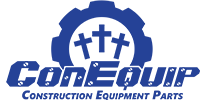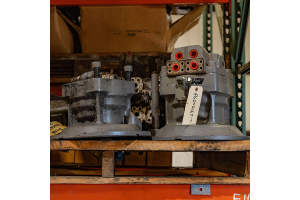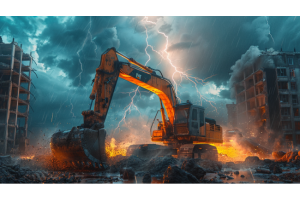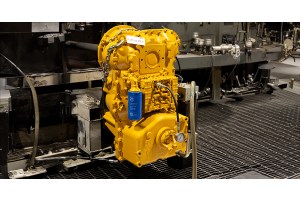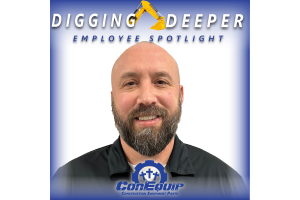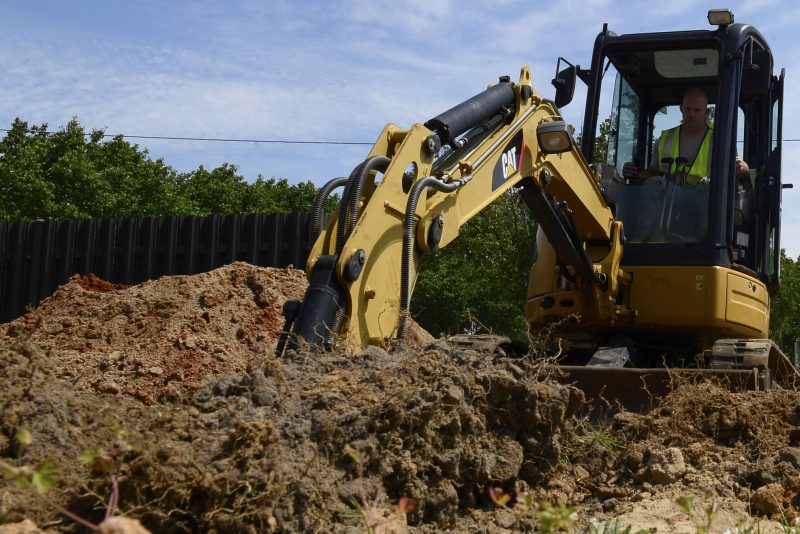
If you are looking to buy a used mini excavator, there are several things you need to inspect before actually spending the money. Taking a few minutes to examine the used machine could end up saving you thousands of dollars not to mention countless hours of frustration. From the big components like the engine to small parts like the pins and bushings, be sure to give the mini excavator a thorough inspection.
You can check out this video for great tips on buying a used mini excavator.
Of course, the machine isn't going to work at all unless the engine is running so let's start there. The first thing you should do is check for leaks. Go through the engine and see if there are any streams of oil or fluid of any kind. If you don't see anything that is troublesome, getting the engine started is a must. Crank up the machine and let it run for a few minutes so the fluids can heat up. Once the mini excavator has been humming for at least 15 minutes allowing the heat and pressure to build up you should recheck the engine for leaks.
If the engine seems to be running right it would be a good time to take the mini excavator for friendly little spin. Be sure to move both forward and backwards, pivot the machine, and also perform some typical maneuvers such as raising and lowering the boom, and try digging if the current owner will allow you to do so. The best you can, listen closely to the final drives. You may want to bring someone else with you to listen. Are the final drives making a squealing or clunking noise? If so, one or both of the final drives could be on its last legs.
A good trick is to swing the cab 90 degrees so the boom is hovering over one side of the tracks, rest the bucket to ground, and push down to raise one track about a foot off the ground. This will give you a better idea of how well the main pump is working. While the machine is elevated, run the track forwards and backwards to check the track for problems. When you are done, swing the boom over and do the same with the opposite track.
When it comes to your tracks, be sure they are the right kind for the type of work you plan on doing. There's a big difference between rubber and steel tracks. With rubber tracks you need to determine what pattern will be best for the type of work your mini excavator will be doing.
With the machine off, you should then check individual sections of the machine. One of the most important components are the pins and bushings. Closely inspect all the joints on the mini excavator for cracks and other evidence of wear. Tug on the bucket links to make sure they're not loose. They are going to move a little but that's expected. Be sure to check the swing frame also for cracks and loose pins as well.
You should also check all the hydraulic lines. Make sure they are intact, don't show unwanted wear, and don't leak.
And don't forget to take a close look at the cab. Remember, you are going to be spending a lot of time inside the cab so it is probably a good idea to make sure you are going to be comfortable there. Does the cab have heat? Does the cab have A/C? Is that seat going to be comfortable for your backend?
The electronics inside the cab aren't simply an amenity, they are a vital part of the mini excavator to ensure the machine is running right, inspect all panels and clusters.
Finally, when it comes to deciding on a used mini excavator it is a good idea to buy a make and model in which parts are available. You may be getting a great deal on a mini excavator, that is until its time to replace one of the final drives for which none exist for the machine any more. If that happens you will have a mini excavator you can't use anymore.
Once you have given the used mini excavator a thorough inspection the decision whether or not to buy is up to you. If you decide to invest in the mini excavator, we only have one other suggestion, git'er done!


